Event planning requires a comprehensive check of a long list. Technological advancements have not changed the challenges that event planners encounter. Planners often deal with bottlenecks and unpredictable visitors. They need to improvise constantly while bearing in mind last-minute fixes that come at a premium. Static floor plans and spreadsheets do not express the complexity that events can have.
Digital twin event technology changes the game. This innovation creates a living, interactive 3D digital twin venue in relation to real-time data. The planner can now walk the space virtually, test various layouts, evaluate crowd flow, and preview venue branding before they physically set up.
Attendees can even enjoy a virtual venue tour digital twin, helping them feel like insiders before the event. By using digital twin in events, teams won’t struggle with last-minute fixes but will instead make data-driven, informed decisions. That is transforming chaos into a smoothly planned, confident execution.
To simplify complex processes, many planners are also turning to event transportation automation software for better logistics handling.
Why Do Events Still Struggle Despite Tech?
Tech solutions like registration apps and livestreaming have improved some aspects of event management; however, many blockage points regarding space planning, real-time simulation in events, and operations remain intractable for organizers.
A 2025 North American industry survey of event producers revealed that more than 60% of organizers report they face last-minute changes to layouts onsite due to one of their planning data or relationships being inaccurate or out of date at the time.
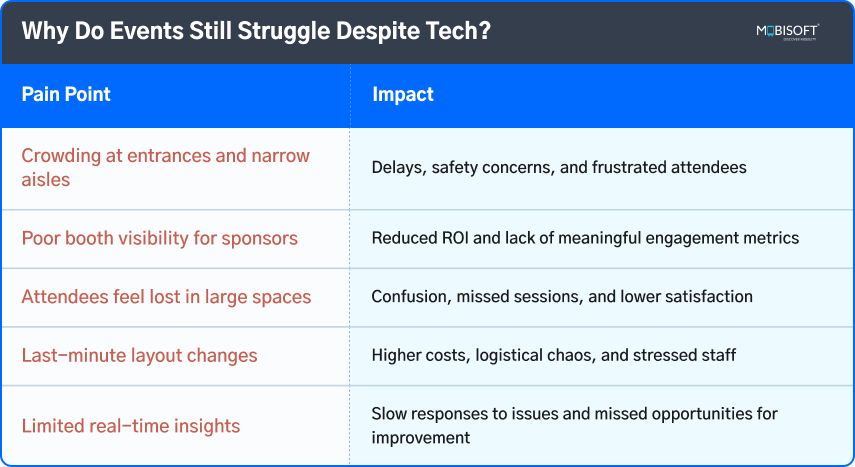
Digital twin for event management offers a powerful solution. Digital twins integrate interactivity and real-time data into our digital planning. They allow event planners to look ahead weeks before the event while simulating multiple scenarios. With IoT in digital twins, the problem emerges long before the event happens and can be solved proactively.
To overcome these hurdles, solutions like AI-powered event booking dispatch software are becoming increasingly vital.
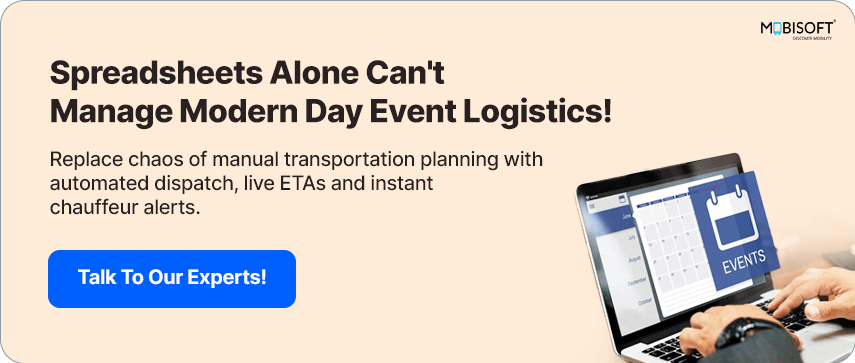
Beyond 3D Maps: What a Digital Twin Really Means
A digital twin architecture goes beyond a static 3D representation of the venue. It is a live, dynamic reflection that utilizes AI-powered digital twin insights, real-time updates, and continuous connectivity.
The twin connects to IoT sensors that track everything happening in the space. For example, crowd size, movement, temperature, and equipment status. It continuously updates to display the exact venue state at any given moment. Organizers can run simulations: testing different room layouts, predicting crowd bottlenecks, or ensuring sponsor signage visibility. Participants can even explore immersive digital twin experiences through virtual booths and sessions before the event begins.
This dynamic event digital twin technology offers:
- Interactive venue walkthroughs give users a better sense of the space.
- Ability to simulate different event scenarios that a static map simply can’t.
- Personalized and data-driven navigation tools that help attendees find their way.
In short, digital twin event planning replicates your event as realistically as possible. Keeping you prepared for the obstacles that might come.
Combined with tools like AI GPS routing for event transportation, planners can streamline both virtual and physical journeys.
Beyond the Buzzword: Why Does It Matter?
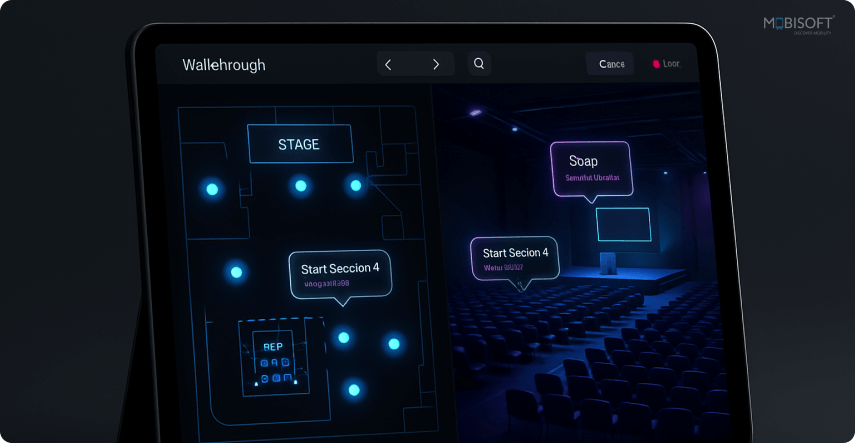
Digital twins transform event management because they solve problems that directly impact satisfaction, safety, and ROI. Here’s how:
Enhanced Decision-Making
Organizers can run predictive scenarios, such as different entrance volumes or booth configurations. This predictive analytics digital twin capability mitigates risks and uncertainties, enabling resource allocation and layout enhancements with confidence. Teams can test ideas virtually before implementation, making decisions based on facts rather than assumptions.
Superior Attendee Experience
For attendees, digital twins alleviate the typical stressors associated with large or complex venues. By providing greater familiarity with how to navigate the venue even before the event, guests ease their apprehension and are better prepared as they search for sessions. A virtual reality event digital twin makes them feel more confident in their ability to navigate a new space, which has been correlated to attending more sessions, better networking opportunities, and engaging for longer periods of time with sponsors. All are directly associated with making connections and having positive and memorable experiences.
Sponsor Visibility and Measurability
Digital twins give sponsors access to a larger audience with enhanced engagement data. In traditional experiences, on-site visibility is limited to physical booths and signs; augmented reality in digital twins delivers immersion before and after the live event, allowing attendees to connect with sponsors through exploring virtual booths and sponsorship content. Research indicates 65% of B2B marketers prioritize measurable digital engagement rather than foot traffic. Something that nowhere else provides data on visitor behavior, interaction, and quality engagement, like a digital twin.
Operational Efficiency and Safety
Operational teams gain monitoring capabilities and simulation models when employing digital twins. By tracking crowd density in real time, the operational team can observe an issue with a piece of equipment and correct it before it becomes an acute issue. Emergency procedures can be practiced in a virtual space, helping operational personnel appropriately prepare and practice. With cyber-physical systems and edge computing digital twin models, the insights delivered create events that ensure a seamless experience in terms of safety, learning, and interaction.
Integrating AI route optimization & live fleet intelligence ensures events run efficiently beyond the venue setup.
Is Data the New Event Currency?
In today’s events, data drives success like never before. And digital twin event technology produces a wealth of actionable information.
What Data Digital Twins Provide:
- Real-time foot traffic patterns across different zones with digital twin data visualization
- Booth visit duration, navigation paths, and engagement heatmaps.
- Session attendance counts and flow rates per entrance.
Turning Raw Data into Strategic Insights:
- Filter out the important events with the highest audience and prioritise the marketing and flow accordingly.
- Personalize attendee journeys by suggesting sessions or networking spots based on interests and movement.
- Give sponsors accurate engagement metrics critical for demonstrating ROI and securing renewals.
Industry Statistics:
- According to Hexagon’s 2025 report, 70% of technology leaders have put digital twin initiatives at the top of their data-driven decision strategies.
- McKinsey reports that the use of digital twins in events raises the operational efficiency of an event by 15% on average.
- Sustainability is gaining traction as well; 57% of digital twin users report reduced environmental impact as a major benefit.
Data has become a currency that organisers need to create as well as utilise to correctly assess the areas of improvement. When combined with fleet optimization technology, this data becomes even more powerful for logistics teams.
The CFO’s Perspective: Where the Real ROI Comes From
CFOs want clear value before approving new tech. With a digital twin for event management, the ROI is both tangible and multifaceted.
Cost Control and Efficiency
For CFOs, digital twins provide obvious cost advantages. They help identify design problems and bad resource decisions at early stages. Virtual layouts, supported by 3D modeling digital twins, optimize logistics and eliminate costly retrofits and wasted efforts at low-speed logistics. Organizations report as much as a 15 percent reduction in preparatory and operational costs. A phased MVP rollout in advance of full implementations sustains investments and contributes to immediate priorities.
Revenue Enhancement through Sponsorship and Hybrid Models
Digital twin event planning is changing how events generate revenue. With increased brand reach and engagement time, sponsors can justify raising fees and look for additional lucrative sources of revenue related to their events beyond ticket sales. Hybrid models allow remote attendees to participate in immersive digital twin experiences, expanding opportunities beyond the temporality and location of the event. Digital twins are a crucial part for CFOs when considering developing long-term revenue streams.
Avoiding Pitfalls
On the other hand, while digital twins are promising and provide many benefits, digital twins must be actively managed to avoid risks. Multi-complex setups will readily add costs and suppress the value delivered, resulting in an insignificant value with higher levels of setup. Most importantly, to achieve more widespread use of digital twins and have them create value, users and stakeholders must be trained and engaged. When these risks are managed well, digital twins deliver steady, scalable ROI that fits financial and operational goals.

For CFOs, digital twin venue solutions represent smart investments that bring together cost control, revenue growth, and risk reduction.
Mistakes That Undermine ROI
While digital twins provide transformative benefits for event management, being aware of common risks and pitfalls helps ensure successful implementation and sustained value.
Overcomplexity
Everyone knows it is a good idea to initiate your journey with a Minimum Viable Product (MVP) so that everyone can prove value in a short time, with plans to scale intelligently. Projects that reconcile aspirations with delivery are the best way to keep projects on time and on budget.
Poor User Adoption
Education on easy-to-use tutorial videos, in-person or virtual demos, and post-event support will ensure proper engagement from participants and allow them to obtain the most value from the event digital twin.
Integration Challenges
Digital twin architecture tends to perform better when widely integrated with registered systems, CRMs, and event platforms. Disconnecting these tools causes data silos and makes obtaining useful insights harder, while negatively impacting the user experience. Work diligently with the IT department and vendors to minimize costly integration problems.
Data Privacy and Security
Digital twins process a lot of data in real time, which raises legitimate concerns around privacy and security. Having clear data policies, robust encryption, and continuous monitoring will protect user data and keep it secure. Compliance with legislation and regulations will establish confidence and protect the organizer and the attendees. Adding real-time vehicle tracking further enhances safety and logistics visibility.
Technologies Powering Digital Twins in Events
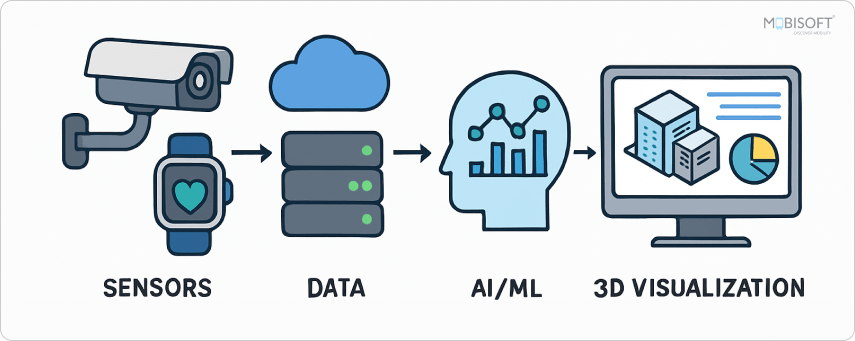
Digital twins utilise real-time data processed through carefully engineered tech to
Internet of Things (IoT) Sensors
- IoT devices scattered across venues track crowd sizes, environmental factors, and equipment status, forming the backbone of digital twin event technology.
- In the next 5 years, more than 90% of IoT platforms will offer digital twin technology, highlighting the importance of IoT for modern event planners.
Cloud Computing
- Flexible cloud infrastructure handles data storage, processing, and access efficiently.
- Teams working from diverse locations will be able to work with the latest information without delays.
Artificial Intelligence & Machine Learning (AI/ML)
- AI processes large volumes of data to forecast congestion, optimize layouts, and tailor attendee experiences.
- It also supports running simulations, allowing planners to preview various event digital twin outcomes before execution.
Extended Reality (XR): AR, VR, and Mixed Reality
- Virtual Reality (VR) offers fully immersive venue walkthroughs without being physically present.
- Augmented Reality (AR) overlays digital navigation or branding into the real-world event environment.
Edge Computing & 5G Networks
- Data from sensors is processed close to the source, ensuring fast updates and low latency.
- 5G networks provide robust wireless connectivity, which is vital for smooth AR navigation and seamless hybrid events powered by digital twins.
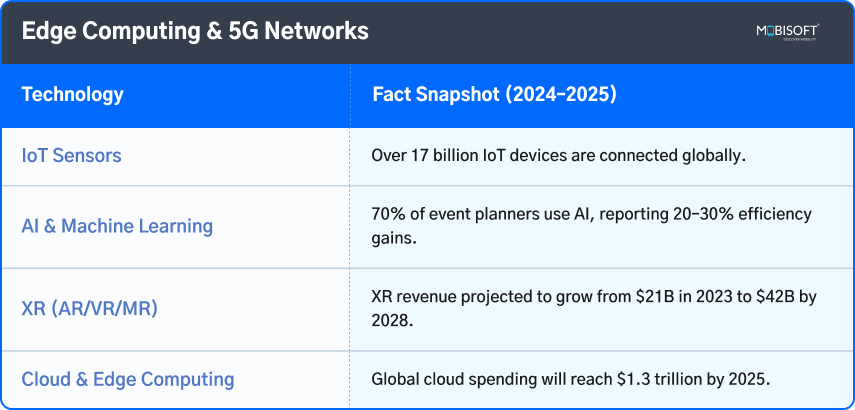
Together, this integrated technology ecosystem delivers responsive, data-rich, and immersive digital twin experiences that take events to the next level.
The Twice-Lived Event: The Future of Experience
Events are evolving to be experienced twice, once in the digital realm, once in the physical, creating expansive business opportunities with event digital twins.
Evolving Sponsorship Models
- Sponsors today want hybrid packages that mix physical booths with engaging digital experiences. This combo boosts their reach and keeps audiences engaged longer.
- With richer data from these digital activations, sponsors can measure their ROI more precisely. This leads to better renewal rates and greater confidence in investing.
Monetizing Hybrid Experiences
- Remote attendees become active participants within digital twin environments. They browse virtual booths, network, and even make purchases. This changes them from passive viewers to engaged users.
- By connecting global audiences, hybrid events open up fresh markets. This gives sponsors and organizers a chance to generate income beyond traditional ticket sales.
Data-Driven Continuous Improvement
- Data from digital twin interactions reveals what attendees prefer and how they behave, helping planners optimize venue layouts, session schedules, and resource use.
- Ongoing benchmarking using digital twin data fuels innovation, builds stakeholder trust, and sharpens competitive advantages over time.
This twice-lived event approach marks a major shift. It puts digital twins at the heart of unlocking modern events’ full potential.
The Next Era of Event Experiences
Digital twins are changing event planning and execution by connecting the foresight of the virtual twin with the reality of the physical twin. Guesswork is replaced with data, confusion is replaced with clarity, and taking reactive measures to fix problems is replaced with proactive measures to manage problems.
CFOs see clear ROI, sponsors see extended engagement, and attendees enjoy experience-driven events that allow them to feel relaxed and stress-free (which starts before their arrival). As the event industry embraces twice-lived experiences, competitive advantage relies on the ability to take full advantage of digital twin capabilities from dynamic layout optimization to monetizing hybrid participation and extending brand ecosystems.
Are you ready to take your next event into this experience-driven era? The twin of your venue is already waiting for your first virtual step.
Leveraging smart supply chain technology supports both efficiency and sustainability goals.
Key takeaways:
- Event Planning Challenges Persist: Despite tech advances, event planners still face bottlenecks, last-minute fixes, and spatial management issues that static plans and spreadsheets cannot capture.
- Digital Twins Transform Planning: Digital twins create live, interactive 3D replicas of venues linked to real-time data, allowing planners to simulate layouts, crowd flows, and branding before physical setup.
- Enhanced Attendee Experience: Virtual venue exploration reduces attendee anxiety, improves navigation, and increases session attendance and engagement with sponsors.
- Improved Sponsor ROI: Digital twins extend sponsor reach with virtual interactions both before and after the event. This also provides detailed engagement data, helping justify sponsorship investment.
- Operational Efficiency and Safety: Continuous real-time monitoring and virtual emergency training enable quick issue resolution and safer, smoother events.
- Data as Critical Event Currency: Digital twins generate rich behavioral, spatial, and engagement data that organizers use for targeted marketing, personalized experiences, and better resource allocation.
- Strong Industry Adoption and Impact: Over 70% of tech leaders prioritize digital twins; users report 15% efficiency improvements and sustainability benefits, including reduced environmental impact.
- CFOs See Clear ROI: Cost reductions from avoiding last-minute changes, revenue growth via hybrid sponsorships, and risk management make digital twins a smart investment.
- Avoiding Pitfalls: Starting with Minimum Viable Products, focusing on user adoption, ensuring system integration, and maintaining security are key to realizing digital twin value.
- Technology Ecosystem: Integrated IoT sensors, cloud computing, AI/ML, extended reality (AR/VR/MR), edge computing, and 5G networks power responsive and immersive digital twin experiences.
- The Twice-Lived Event: Events now blend physical and digital experiences, unlocking new sponsorship models, hybrid revenue streams, and data-driven continuous improvement that drive competitive advantage.
- Digital Twins Shape the Future: By linking virtual foresight with physical reality, digital twins eliminate guesswork, boost stakeholder confidence, and create memorable, data-backed event experiences that start before arrival and extend beyond departure.
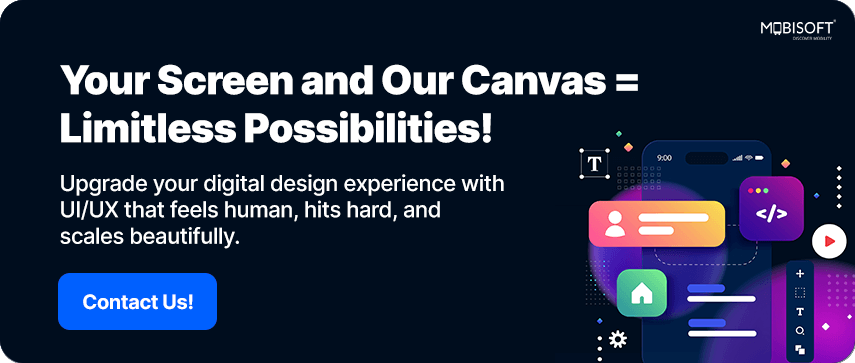

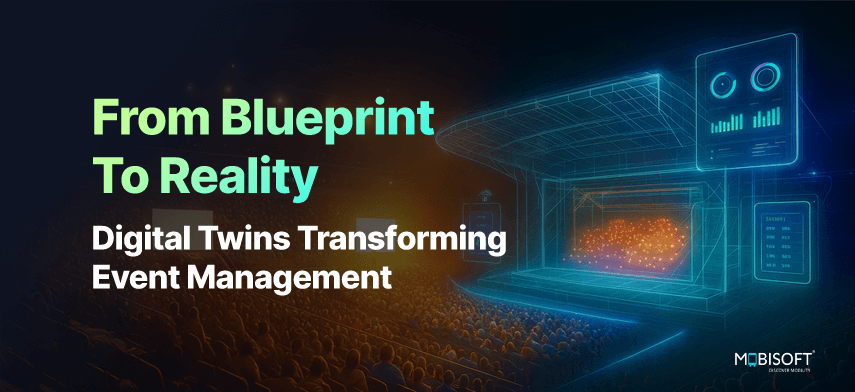


 July 9, 2025
July 9, 2025


